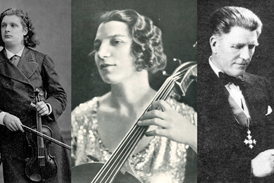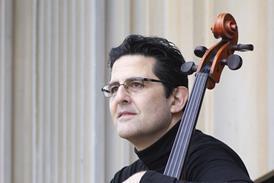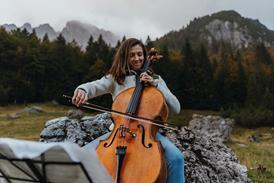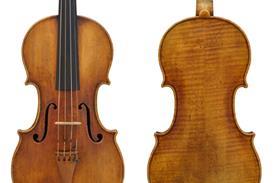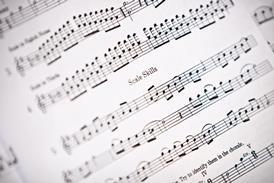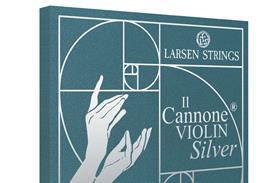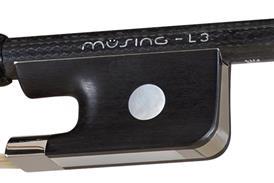All Lutherie articles – Page 2
-
 Premium ❘ Feature
Premium ❘ FeatureDecorating a bow frog: let the flowers bloom
A very specialist part of the bow maker’s craft is the addition of decorative inlay into a bow frog. Vladimiros Sorokin-Andreou presents his method for this intricate and delicate part of the process
-
 Premium ❘ Feature
Premium ❘ FeatureCello bridge design: X marks the spot
For many years the design of the cello bridge has remained constant – but could it be improved? Sebastian Gonzalez presents the results of a comparison between the standard French bridge and a newly designed model, while Gaian Amorim tracks the development of the bridge
-
 Premium ❘ Feature
Premium ❘ FeatureDouble bass set-up: not a giant violin
The size and shape of the double bass mean its set-up differs greatly from the other bowed stringed instruments. Bass maker Arnold E. Schnitzer presents a comprehensive guide, designed for both luthiers and practically minded bassists
-
 Premium ❘ Feature
Premium ❘ FeatureElias Placht: how one man founded the violin making tradition of Schönbach
By the early 20th century, the town of Schönbach was producing tens of thousands of violins per year – but the industry began with just one man. Christian Hoyer sifts through the records to reveal the life and legacy of Elias Placht
-
 Premium ❘ Feature
Premium ❘ FeatureAnalysing the ‘Boissier, Sarasate’: Stradivari à la mode
George Stoppani presents the results of an investigation into the acoustics of the ‘Boissier, Sarasate’, focusing primarily on the ‘signature modes’
-
 Premium ❘ Feature
Premium ❘ FeatureThe Fulton collection: Magnificent obsession
For decades, top soloists would visit the home of David Fulton to sample the treasures of his legendary collection. Now dispersed, the instruments have been brought together again in book form. The collector shares some of the highlights with Christian Lloyd
-
 Premium ❘ Feature
Premium ❘ FeatureFilippo de Filippi: From Vatican to varnish
The 19th-century violin maker Filippo de Filippi had an unusual route to his chosen career, taking in the Papal court, the Risorgimento and Rome’s cultural milieu. Stefano Pio explores his intriguing life
-
 Premium ❘ Feature
Premium ❘ FeatureCopying a Montagnana cello: The Full Monty
For the past few years, the attendees of the annual Oberlin Violin Makers Workshop have set themselves increasingly challenging group projects. Robin Aitchison explains how 30 luthiers collaborated on their latest task: to copy a Montagnana cello with pinpoint accuracy
-
 Premium ❘ Feature
Premium ❘ FeatureNorwegian Wood: The history of the Hardanger fiddle
Regarded as Norway’s national instrument, the Hardanger fiddle is the product of a long evolution beginning in medieval times. Wiebke Lüders presents a history of the instrument’s development, profiling some of the most notable artisans
-
 Premium ❘ Feature
Premium ❘ Feature‘Be the person to teach them how to learn’ - Training an apprentice
Sarah Kluge explains her method of training an apprentice from scratch, including an essential list of dos and don’ts
-
 Premium ❘ Feature
Premium ❘ FeatureMarino Capicchioni: A one-of-a-kind luthier
Self-taught and living far away from any centres of lutherie, Marino Capicchioni became famous in his time for the superb quality of his instruments.
-
 Premium ❘ Feature
Premium ❘ Feature1709 ‘King Carlos IV’ Stradivari violin: A crown jewel
Florian Leonhard reveals the history behind the 1709 ‘King Carlos IV’ Stradivari violin
-
 Premium ❘ Feature
Premium ❘ FeaturePlate archings and tone - part 2: a question of tone
Nigel Harris shows how close control of the arching shape of the plates can influence tone
-
 Premium ❘ Feature
Premium ❘ FeatureTrade Secrets: Replicating peg shapes without a copying lathe
A device for maintaining the same shape and diameter of instrument pegs during the carving process
-
 Premium ❘ Feature
Premium ❘ FeatureLuthiers sans Frontières: Beyond the limits
Peter Somerford speaks to representatives of Luthiers sans Frontières
-
 Premium ❘ Feature
Premium ❘ FeatureValue judgements: What is your time and labour worth?
Benjamin Schilbach gives a guide to determining an hourly rate as the cost of living rises daily
-
 Premium ❘ Feature
Premium ❘ FeatureHow did Cremonese luthiers use consistent measurements?
Simone Zopf argues that there was in fact a single unit of measurement from which most of the rest can be derived
-
 Premium ❘ Feature
Premium ❘ FeatureLutherie in Argentina: New world wonders
Lionnel Genovart profiles some of the best-known names in the country’s violin making history
-
 Premium ❘ Feature
Premium ❘ FeatureThe art of Computer Numerical Control arching
Yann Poulain reveals his method for roughing out the arching of the front and back plates using the technology
-
 Premium ❘ Feature
Premium ❘ Feature1694 Stradivari ‘Benecke’ violin: Unconventional Beauty
The 1694 ‘Benecke’ violin is a masterpiece of Stradivari’s ‘Long Pattern’. Andrea Zanrè and Rudolf Hopfner take a look at this exquisite example, detailing its provenance and revealing what CT scans can tell us about its construction






